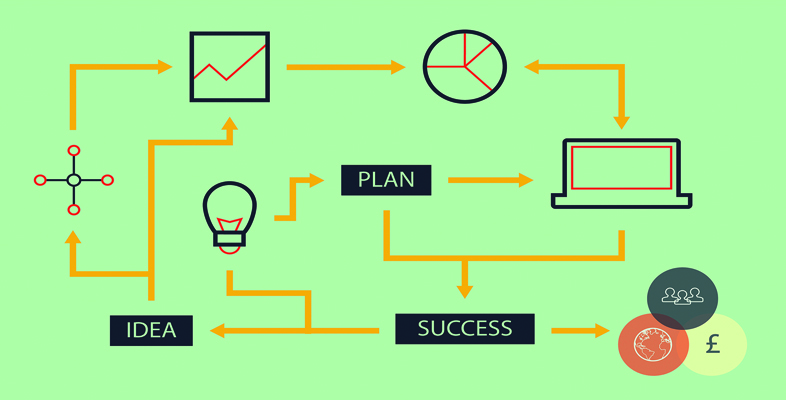1.4 What do customers want?
One thing you might want to try when starting up your business is to widen the range of potential customers you speak to in order to get a better sense of the market for your product or services. There are lots of ways to do this, even if you don’t have a prototype or physical example for people to try. Market researchers conduct ‘focus groups’ to gather qualitative feedback from small groups of people. These facilitated group discussions are useful ways of understanding issues at a deeper level – if they are well conducted or moderated.
Facilitators may ask questions, show or demonstrate products, use images or share overall concepts and key messages. They will record how the group responds to these, positively and negatively, and whether their responses are held by all or some, the reasons behind them and so on.
This idea of sharing early and often, common in the software industry, is how many companies operate.
For example, Lego is particularly well known for how it involves its broad customer and fan base in the development and design of its products. Is this an approach you could use, or could you at least adopt a similar ethos?
Activity 2 Testing and learning from feedback
Imagine you have run one focus group made up of people you know (perhaps friends, family and people you know well). You now wish to arrange a second one with a group of ‘real’ customers or potential customers.
The results of your first focus group were positive. This time around you have managed to gather a broader range of people, some whose interest in your offer is not immediately apparent.
Market researchers ask you to consider:
- Are the benefits of the product clearly communicated and believable?
- Does the product or service address a need or solve a problem?
- What other products or services can you imagine using to meet the need?
- What is the customer’s perception of how valuable the product or service would be to them?
- Would they use/purchase the product or service?
- How often would they use/purchase it and where would they look for it?
You cannot ask these questions or get a meaningful response from others until you have thought them through yourself. Try these three thought experiments:
- First, think about how you would answer the questions above and note down your own answers.
- Second, in the description of the first focus group it was indicated these were people you knew, or who knew you. What about the people in the second focus group – how are they the same or different in terms of their views, experiences and feedback?
- Finally, draft how you might run or structure a focus group to elicit a response to these questions. What questions might you ask? What specifics would you want to probe into? Are there any images, products, assumptions or scenarios you would want to test?
Discussion
Hopefully you will have considered that there are many different perspectives and opinions to be gained from this wider consultation exercise and that the answers given by the two groups may differ significantly from how you answered them. This is likely to be true in the real world when you start to try to sell your product or service. What you think is important, essential or attractive as an offer may not resonate with customers. There may be potential needs and uses for a product or service that have not occurred to you or whole groups of customers – leading to a pivot!
Are the people in your groups typical of the customers you are targeting or even representative of different target groups? If not, can you trust the findings? How reliable are the responses from friends and family – can they be critical and honest?
You do have to start testing your idea out somewhere and so it is legitimate to start with people you know or likeminded people. However, you may want to frame your questions in such a way to widen out the possible uses, competitors, needs, key messages etc. You may also want to profile possible customer types before getting real customers to narrow down some of these options. This technique of opening up discussion to get input and broad insights needs to be matched with the ability to listen carefully and zoom in to explore points of real interest and use to you as you plan your marketing strategy. There are many videos and tips on conducting focus groups online – what to do and what not to do. If you want to explore more it could be very beneficial.
By working through the activity on focus groups, you will have started to sense check or refine your understanding of the value you are creating for the customer. Thinking about your ‘usual suspect’ touches on who your ideal customer is, and asks you to think through the intended customers and perhaps even unintended ones. It has become quite usual for organisations to develop ‘personas’ often based on real information about perfect or even difficult customers. These detailed descriptions are folded into the development process and used to inform decision making about how different groups might be treated. User Experience Development emerged in the software industry and is becoming increasingly common across the service sector as a whole.
